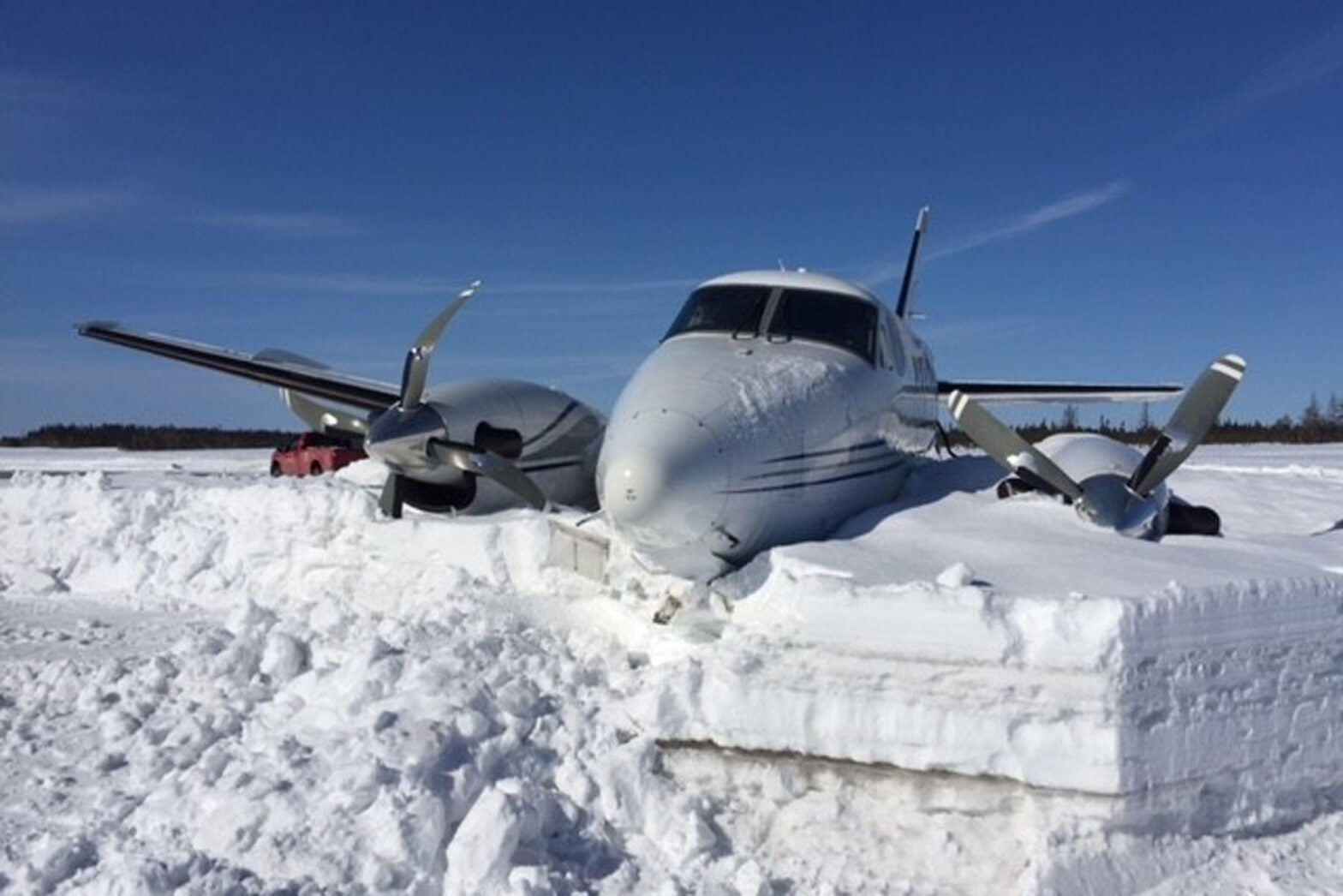Among the issues identified during a 2018 overrun investigation was, “The rules governing instrument approaches in Canada are too complex, confusing and ineffective at preventing pilots from conducting approaches that are not allowed, or banned, because they are below the minimum weather limits,” according to Canada’s Transportation Safety Board. In other parts of the world, a flight crew is not allowed to begin an instrument approach if the reported weather is below published minimums for a given approach except in Canada, where “flight crews are permitted to conduct approaches in visibility conditions that are below what is published.”
The TSB recently issued these findings as part of its report of a February 2018 accident in which a chartered Beech King Air A100 ran off the end of the runway at Havre-Saint-Pierre, Quebec. The airplane was substantially damaged but luckily all occupants escaped with only minor injuries—or none at all. As part of the report, the TSB asked Transport Canada to simplify approach and landing minima as presented in a TSB video.
The King Air A100 was conducting a charter flight under instrument flight rules, from the Sept-Îles Airport, Quebec, to the Havre St-Pierre Airport, Quebec, with two crew members and six passengers. “Prior to departure, the weather at Havre St-Pierre aerodrome indicated a visibility of 3/4 of a statute mile in light snow…enroute, the crew received updated weather, which indicated the visibility had deteriorated to just 1/4 mile in heavy snow—well below the minimum visibility allowed to conduct the approach. However, the pilot believed he could continue the approach safely.” When the pilot did manage to catch sight of a small patch of runway, he continued the landing, touching down just 700 feet before the end of the runway. The aircraft overran the end and came to a stop in a large snowbank approximately 220 feet beyond the end of the runway.
The TSB said, “Flight crews have to consult multiple reference documents and consider a variety of factors to determine if an approach is allowed. The current rules also make it difficult for ATC to determine whether an approach is authorized. As a result, ATC will clear an aircraft for an approach regardless of the published minima, leaving the ultimate decision to conduct the approach to the flight crew.” The TSB added that, “based on the pilot’s interpretation of the various factors and exceptions relating to the approach ban, the pilot incorrectly believed he was allowed to conduct the approach.”
